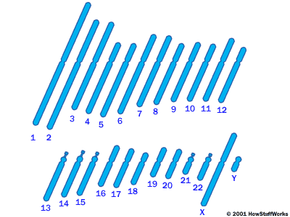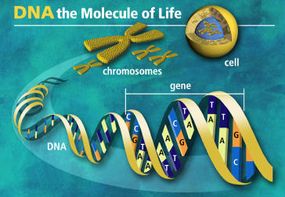People throw around the term "gene pool" both seriously and comically.
On the funny end of the spectrum, you have things like the Darwin Awards, which "salute the improvement of the human genome by honoring those who accidentally remove themselves from it" (we're looking at you, lawn chair weather balloon guy.)
Advertisement
On the serious side, the term arises when you're talking about animals nearing extinction, which can develop health problems courtesy of the species' shrinking gene pool.
In this article, we'll talk about what a gene pool is and how it can grow and shrink (and we won't demand anyone's removal from said pool).
To understand a gene pool, you need to know a little bit about genes, right? If you've read How Cells Work, then you are superbly familiar with the inner workings of the E. coli bacteria and can skip this section. If not, here's a quick summary:
- A bacterium is a small, single-celled organism. In the case of E. coli, the bacteria are about one-hundredth the size of a typical human cell.
- The DNA strand in E. coli contains about 4 million base pairs, and these pairs are organized into a few thousand genes. A gene is simply a template for a protein, and often these proteins are enzymes.
- An enzyme is a protein that speeds up a particular chemical reaction. For example, one of the enzymes in an E. coli's DNA might know how to break a maltose molecule (a simple sugar) into its two glucose molecules. That's all that that particular enzyme can do, but that action is pretty darned important when an E. coli bacterium is eating maltose.
- To make an enzyme that it needs, the chemical mechanisms inside an E. coli bacterium make a copy of a gene from the DNA strand and use this template to form the enzyme. The E. coli might have thousands of copies of some enzymes floating around inside it, and only a few copies of others. All those different enzymes floating in the cell makes the cell's chemistry possible. This chemistry, in turn, makes the cell "alive" -- it allows the E. coli to sense food, move around, eat and reproduce. So, in any living cell, DNA helps to create enyzmes, and enzymes create the chemical reactions that are "life."
Bacteria reproduce asexually. This means that, when a bacteria cell splits, both halves of the split are identical -- they contain exactly the same DNA. The offspring is a clone of the parent. On the next page, learn about sexual reproduction and random gene selection.



